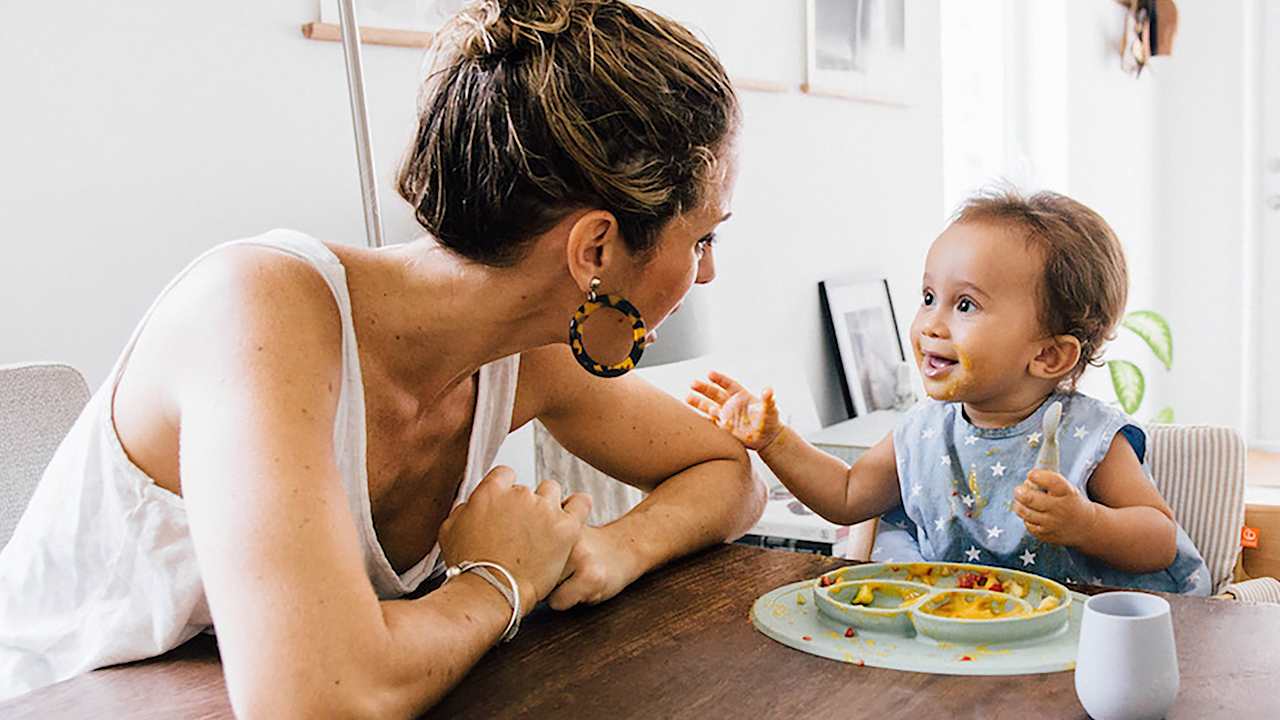Please note the information on this page is not medical advice and is of a general nature only. Always consult your doctor or a relevant medical professional before changing your diet or beginning solids with your baby.
An alternative way of introducing solid foods to your baby, baby-led weaning (BLW) allows babies to explore new foods and textures at their own pace. Read on to find out more about this approach.

As the title suggests, baby-led weaning is a method where babies 6 months or older begin feeding themselves with finger foods from the start, rather than being spoon-fed purées. The idea behind BLW is that it allows babies to feed themselves the food they want and self-regulate the amount they eat. A BLW approach can promote independence and motor skill development as babies get used to picking up foods on their own.
You can start baby-led weaning at the same time as you would typically introduce solid foods for traditional weaning, which is around 6 months old. However, rather than spoon-feeding your baby puréed and mashed food, you move straight to offering them soft finger foods cut in easy-to-hold strips.
There are 3 clear signs which show your baby is ready to try solid foods alongside breast milk or infant formula. They will be able to:
1. Stay in a sitting position unsupported, holding their head steady
2. Co-ordinate their eyes, hands and mouth so they can pick up food and put it in their mouth
3. Swallow food rather than spitting it out
When you first start weaning, how much your baby eats is less important than getting them used to the idea of eating. They will still get the majority of their energy and nutrients from breast milk or formula so try not to worry about the amount they eat. Focus instead on letting them explore a variety of foods and have fun trying different tastes and textures.
It is natural to have choking concerns when introducing your baby to solid foods. However, as long as you offer soft, safe foods, your baby’s gums are capable of chewing or ‘gumming’ and then swallowing them. Baby-led weaning is as safe as spoon-feeding and does not lead to a higher risk of choking. You should always supervise your baby while they are eating, regardless of the weaning approach you choose to take.
 The first foods you offer your baby should be soft enough to mush in between your fingers. Avoid foods that are hard, crunchy, coin-shaped, small, or tough to chew. Offer foods that can be sliced into thick strips or sticks so your baby can easily hold them in their fist. Once your baby has developed their pincer grasp at around 9 months, you can start cutting food into smaller bite-sized pieces.
The first foods you offer your baby should be soft enough to mush in between your fingers. Avoid foods that are hard, crunchy, coin-shaped, small, or tough to chew. Offer foods that can be sliced into thick strips or sticks so your baby can easily hold them in their fist. Once your baby has developed their pincer grasp at around 9 months, you can start cutting food into smaller bite-sized pieces.
Some of the best first foods to try include:
• Sweet potatoes, peeled and roasted
• Apples, peeled, sliced and softened
• Hardboiled eggs
• Steamed broccoli or cauliflower
• Banana
• Chicken, cooked until soft, without bones
• Boiled pasta
Steaming sliced fruits and vegetables in the Varoma® is a great way of achieving a soft texture. Just as with traditional weaning, you do not need to add salt, sugar or seasoning to first foods. Similarly, always allow the food to cool down before offering it to your baby.
Whether you choose traditional weaning or a baby-led approach – there is no right or wrong way to feed your baby. The most important thing is that you help them eat a wide variety of food and get all the nutrients they need. Embrace the mess and enjoy the process – your baby will be eating home-cooked meals with you before you know it.